#nippon records
Explore tagged Tumblr posts
Text


PADOVA vs. PERUGIA 2-3 Lega Pallavolo Serie A | 06.10.2024
#yuki ishikawa#volleyball#ryujin nippon#sir safety perugia#yukiedit#mine#saw this on the live stream and instantly lost my brains#ended up giffing a screen recording and deleting hundreds of duplicate frames#worth it tho#mr. mvp
38 notes
·
View notes
Photo






Kazumi Totaka - Totakeke Music Instrumental Selection | Nippon Columbia | 2022 | Black
#kazumi totaka#shiho fujii#atsuko asahi#totakeke music instrumental selection#nippon columbia#vinyl#black vinyl#lp#music#records#record collection#vgm#video game music#soundtrack#animal crossing#animal crossing new horizons#nintendo#k.k. slider
136 notes
·
View notes
Text

Tengu are a medium sized, arboreal, humanoid inhabiting the lush mountain and forest terrain of Nippon . Communal and highly social, Tengu live in large extended family units with a matriarch or patriarch at the helm.
Sexual dimorphism is subtle. With males and females being roughly the same size, color and shape. While males and females both posses large noses, dominant elder males have been recorded having noses that extended beyond their stomachs. Such a nose is incredibly attractive to highly selective females.
While relatively docile in nature, if provoked, they can be quite dangerous, using their large fangs, claws and brute to wield fatal blows. This ferocity is especially displayed during territory disputes amongst rival clans.
While relatively high on the food chain Tengu are still susceptible to predation. Kitsune, Ryu and at times even Oni will actively hunt adult Tengu. However it is the young pups who are most susceptible during their nascent voyages away from mom.
While incredibly nimble in the trees, Tengu also are able to fly. Due to their robust bodies they can only fly for short distances but can cover vast distances despite this.
An eclectic diet, Tengu are opportunistic eaters. With a diet ranging from fruits and nuts to Kappa chicks and small rodents.
Due to their high intelligence Tengu are known tricksters who will regularly steal clothing, food and supplies from lost travelers.
#concept art#creature design#fantasy art#creature concept#concept design#monster#fantasy#speculative biology#tengu#japan#yokai#japanesemythology#fairy#conceptart#creaturedesign#bestiary#artistoninstagram#monstergram#magicthegathering#dungeonsanddragons#digitalart#fantasyart#mythologicalcreatures#folklore#sketch
684 notes
·
View notes
Text
Alarm bells ring in Japan as experts warn of fast-spreading new Covid variant KP. 3 - Published July 19, 2024
Paywalled at the South China Morning Post: Unpaywalled by Covidsafehotties.
The country reported a 39 per cent week-on-week surge in infections from July 1 to 7, with Okinawa the hardest hit
Japan is grappling with a new and highly contagious coronavirus variant that is fuelling the country’s 11th wave of Covid-19 infections, health experts warn. The KP. 3 variant is spreading rapidly, even among those who are vaccinated or have recovered from previous infections, according to Kazuhiro Tateda, president of the Japan Association of Infectious Diseases.
“It is, unfortunately, the nature of the virus to become more resilient and resistant each time it changes into a different form,” Tateda told This Week in Asia. “People lose their immunity quite quickly after being vaccinated, so they have little or no resistance.”
Tateda, who sits on Japan’s advisory panel formed at the start of the pandemic, said the coming weeks will be critical as authorities monitor the variant’s spread and impact.
While hospitals have reported a sharp uptick in Covid-19 admissions, Tateda said he is “relieved that not many of these cases are severe”. Typical symptoms of the KP. 3 variant include high fever, sore throat, loss of smell and taste, headaches, and fatigue.
According to the health ministry, medical facilities across Japan logged a 1.39-fold – or 39 per cent – increase in infections from July 1 to 7, compared to the previous week.
Okinawa prefecture has been the hardest hit by the new strain of the virus, with hospitals reporting an average of nearly 30 infections per days. The KP. 3 variant has accounted for more than 90 per cent of Covid-19 cases nationwide, the Fuji News Network reported, leading to renewed concerns about bed shortages at medical facilities.
Since Japan’s first detected Covid-19 case in early 2020 involving a man who returned from the Chinese city of Wuhan, East Asian nation has recorded a total of 34 million infections and around 75,000 related deaths. The country’s Covid-19 caseload peaked on August 5, 2022, when more than 253,000 people were receiving treatment.
Japan’s uptick in cases coincides with similar increases being observed globally. In the US, the Centres for Disease Control and Prevention reported a 23.5 per cent week-over-week rise in the number of people visiting hospitals with Covid-19 symptoms during the week ending July 6.
High-profile US.figures such as President Joe Biden and Doug Emhoff, husband of Vice-President Kamala Harris, have recently tested positive and gone into isolation. Meanwhile, several riders in the ongoing Tour de France cycling race have also returned positive test results.
Experts say it is too early to determine the full impact of the new variant on Japanese businesses or cross-border activities like travel. Precautionary measures are already in place at the country’s air and seaports to monitor the health of incoming arrivals. However, the global spike in cases may deter some Japanese from venturing abroad this summer.
A recent survey by Nippon Life insurance found that just 3.2 per cent of Japanese plan to travel abroad in the coming months, which is likely to depress annual travel figures once again. In 2023, Japan saw 9.62 million outbound travellers, a recovery after three years of extremely low pandemic-era numbers, but still far below the 20.01 million outbound travellers recorded in 2019.
Despite the latest surge, infectious disease expert Tateda insists there is no need for panic in Japan. However, he emphasised the importance of following precautions implemented during the pandemic’s peak, such as mask-wearing in public, handwashing, and social distancing.
Tateda also stressed that anyone testing positive should immediately isolate themselves.
#covid#mask up#pandemic#covid 19#coronavirus#wear a mask#sars cov 2#still coviding#public health#wear a respirator
207 notes
·
View notes
Note
Do you think Hideaki Anno is right-wing or is it too difficult to tell from his works?
Haha that's a question.
I'll focus on nationalism rather than trying to get into, say, gender politics here, since that's the accusation that most seems to follow Anno around.
Anno's politics are... hard to pin down from his work alone, I think. He's like... a prototypical case of that generation of 'apolitical' otaku that followed after the Anpo generation, with Eva pretty much the definitive statement of the 90s psychological turn. But that said... I can definitely see the argument that there are nationalist themes in some of his works like Gunbuster, though I definitely don't buy every reading in this series (lots of dubious kanji reading). He definitely has that otaku fascination with war machinery and war media (apparently he's a big fan of The Battle for Okinawa and watched it over 100 times), which can easily blend into imperialist ideology.
But there's complications here. For example, the Animekritik series cites the setting of Gunbuster in Okinawa as something formative to the nationalist ideology they are trying to illustrate - in part in relation to the ongoing controversy over American military bases in Okinawa. Anno has at least been on record as saying he's disinterested in Western culture, and I can see the reading of Jung-Freud as an external Other who is shown up by the Japanese girls, somehow simultaneously representing the USSR, Europe and the States. But anti-Americanism in Japan can come in both left and right wing flavours (c.f. Anpo). Communists want the Americans out too! Portraying Okinawa as a military training camp in a Japan-led military coalition certainly comes across as a more nationalist take on that whole matter, but I feel like it's got about the same level of serious nationalist commitment as Doctor Who putting random British people all over space.
When Gainax has played around with nationalist imagery it's usually been in a kind of ironic sendup way - see Ash's writeup about the Aikoku Sentai Dai Nippon controversy, in which Daicon Film staff were disdainful at the accusation that their goofy toku film reflected a genuine nationalist sentiment. While Imaishi takes it further, a lot of Anno's work is also about playfully reappropriating past works. In Anno's case a lot of that is classic tokusatsu, Ultraman in particular, and also Leiji Matsumoto's scifi, notably Space Battleship Yamato, which, well... you know the deal there lol. But it's not so simple to go from that to 'Anno is a nationalist'.
Eva doesn't tend to attract these accusations, but I recall the controversy came back around with Shin Godzilla, though to my mind it's hard to find a straightforwardly nationalist reading of that movie. (It's a film about the experience of the earthquake and Fukushima nuclear plant meltdown, and it's critical of Japan's bureaucracy, but equally one where the JSDF repeatedly get their shit handed to them and civilian infrastructure is what actually stops Godzilla - not to mention Godzilla is painted as quite a tragic figure here!) It all feels pretty tenuous.
I haven't seen as many of Anno's live action films as I'd like, so I can't comment as much on the more recent Shin films, Love & Pop, Shiki-Jitsu etc. And it's always possible for subtler allusions to slip by the anglophone viewer. Still, I don't personally think Anno's post-Gunbuster work is particularly nationalist in outlook. I certainly haven't seen any evidence of him favouring, say, war crime denial, anti-Korean sentiment, remilitarisation, etc etc. - he's definitely not as dubious a figure as someone like Hajime Isayama. But it's not like, anti-nationalist either! It's just kind of hard to read in those terms.
So I lean towards your second option, I'm not convinced he's a nationalist or particularly right wing. He happily associates with Hayao Miyazaki, who's definitely not a right wing guy. But Anno'll also let hilariously cooked stuff like whatever On A Gloomy Night was supposed to be into the Animator Expo. So I don't think he's particularly left wing either, he's no Ikuni! But Anno's fiction is very individual focused, full of psychoanalytic themes and internal conflict. He can vividly portray trauma and complex power dynamics. There's a lot to appreciate in works like Eva from a left-wing angle. I don't really know why this association of nationalism follows him around.
Idk, maybe there's a bunch of interviews I'm missing! Presumably you have a reason for asking this question...
141 notes
·
View notes
Note
Just saw your recent reblog, I'm so sorry if you get asked this a lot--is the cut post-game location where Akechi is not a rehab?
Wow, I've just been through my index and it doesn't seem I've ever posted about this—so thank you for asking! Note that this is (hopefully) PART ONE of a two-part post; this is way overlong without me getting into my thoughts about this scene.
The scene we're talking about is a deleted scene where Akechi (offscreen, and clearly alive) is talking to two employees (onscreen), in what looks like a bathhouse. They gossip about his plans for the future, until he arrives in person to catch them out and put some things on record.
Here's the scene, with my translation. (page down for the text). Pay attention to how the, uh, man standing in the bath knows Akechi is outside all along, while the woman who comes in to gossip does not.
youtube
There are a lot of theories about this scene—where is it happening? when does it happen? what purpose does it serve?—not least because there are several different translations floating around. But we can tell quite a bit from the text. Quick summary, since this is a post and a half already:
The place Akechi checks in on 12/24, per this deleted scene, is not a rehab or hotel or hospital, but a type of refuge called a kakekomidera.
This scene takes place (probably) after school on 2/10, as the last of the string of confidant interventions between 2/4 and 2/13. As such, it represents the thing Akechi is doing for Joker to get him out of detention.
Let's take a look.
firstly, what is this place?
People have variously described the bathhouse in this scene as a rehab (no), a hotel or ryokan (no), a hospital (no) and a mental hospital (def Not). So what is it?
The scene tells us exactly what it is:
Gossipy Employee ⋯まあここは、俺らもそうだけ���、スネに傷あるモンの駆け込み寺だ。 ... maa koko wa, orera mo sou da kedo, sune ni kizu aru mon no kakekomidera da [lit. well, this place is a kakekomidera for people with a guilty conscience, like us.]
what is a kakekomidera?
A 寺 tera is a Buddhist temple; it's the ji at the end of a lot of temple names. 駆け込む kakekomu means to seek refuge somewhere. So a kakekomidera is a temple where you seek refuge.
And that is the place Akechi has taken himself to: it's a refuge. It's a shelter, like a domestic violence shelter—somewhere you go when you're at the end of your rope, with nowhere to turn; when you're in danger. Somewhere he stayed as a child—with his mother, who was likewise in a perilous and vulnerable situation. Where he knows there are people who will take him in, no questions asked, after everything he's done. Who might even remember him.
Historically, a kakekomidera (like the one in the link) was a place women could go if their husbands were abusive; they entered religious service, and subsequently accessed divorce: "Temple records show that, during the Tokugawa period alone"—that's 1603–1857, often also called the Edo period—"an estimated 2,000 women sought shelter there."
Services called kakekomidera still exist today. They are often in temples—if you can stop by to talk to a monk about your problems and look for solutions, that's a kakekomidera. Online helpdesks are often called kakekomidera—you can look up a "Desktop Publishing kakekomidera" site, for instance.
[more below the cut...]
English sources are usually all referencing the same organisation, Gen Hidemori's Nippon Kakekomidera in Shinjuku:
Gen opens the doors of his organization to all who are in dire straits, regardless of age, gender, income, or social status. Visitors to the office located in Tokyo’s infamous Kabukichō red-light district seek respite from domestic violence, pressing debt, and trouble with organized crime groups. Gen says he even sees gang members looking to make a clean break from the criminal underworld.
Does a kakekomidera do rehab-like things sometimes? Sure. They act as halfway houses for people leaving prison. They help people work through problems in their lives. But in English, a "rehab" is focused on rehabilitating people—after addiction, after illness or injury, after prison, during old age—and that is not what I think we should be picturing here.
I have not been able to track down a residential one like the one in the game, but hey, it's fiction. I wouldn't want to say, though, that they don't exist—don't forget the historical kakekomidera, where you entered service and stayed until you were ready to leave. Though this doesn't appear to be any sort of religious setting, I suspect it's not for nothing that Akechi is doing menial work around the place.
next, when does this scene take place?
The game code allows us to lock this scene almost down to the hour. This will get a little technical at points, so bear with me. You can easily skim past most of this.
Every event in P5 and P5R is numbered. They have two numbers: a major number, identifying the event, and a minor number, identifying part of the event. (You can get more granular than this, identifying individual lines of the script, but that's beyond our scope here.)
This deleted event of Akechi's is numbered E470_810. That is, it has a major number (identifying the event) of 470, and a minor number (identifying part of event 470) of 810.
what is event 470?
Event 470 is the collection of events that happen after Joker enters detention—that is, on 12/24 with Sae in vanilla, or on 2/4 after Maruki's boss fight in Royal.
You can probably see where this is going. Here's the list of events in event 470:
E470_001—[vanilla only] the sad Christmas Day meeting after Joker is arrested, where the PTs determine that this is super unfair and they should do something about it;
E470_101—[vanilla only] Joker's interrogation while detained;
E470_201—Sojiro's intervention after Joker's arrest;
E470_211—Takemi's intervention after Joker's arrest;
E470_301—Kawakami's intervention after Joker's arrest;
E470_311—Iwai's intervention after Joker's arrest;
E470_401—Mishima's intervention after Joker's arrest;
E470_411—Chihaya's intervention after Joker's arrest;
E470_501—Ohya's intervention after Joker's arrest;
E470_511—Yoshida's intervention after Joker's arrest;
E470_601—Shinya's intervention after Joker's arrest;
E470_611—Hifumi's intervention after Joker's arrest;
E470_701—Makoto's intervention after Joker's arrest;
E470_711—Sumire's intervention after Joker's arrest;
E470_810—Akechi's intervention after Joker's arrest.
The next event after that is E471_001, which is Sae meeting Joker in detention for his release on 2/13.
What does this list tell us? Well, mainly, this deleted scene of Akechi's, E470_810, was intended to play along with all those others up there; they're the same event, with the same major number, 470. It's not some random scene we can know nothing about; it has a context, and that context is that Akechi, just like the others, is working to get Joker out of detention. If this scene had been left in, it would have played along with all the other max-rank confidant scenes prior to 2/13.
You might have noticed that Akechi's scene is not quite grouped with the others—there is no E470_801, when the other confidant scenes move cleanly through Ex_x01 to Ex_x11 to Ex_x01 and so on. Whether that's because there's a missing event (storyboarded but never written?) or because he's not quite working with the others, or perhaps because it would have played out of sequence, like Makoto's (numbered last, originally, even though it played first)—we can't tell.
I did say we could lock this scene down almost to the hour, and that brings us to something called the scheduler:
where is event 470 in the scheduler? what is the scheduler?
The scheduler is a piece of code that tells the game engine what events to play on what day. If you want to know what triggers an event to play, the scheduler is a good first stop.
It's split into one file per month (SCHEDULER_04.BF through SCHEDULER_03.BF), and each month is split into a number of functions per day. Usually two functions play in the morning (early and mid-morning?) and five in the PM slot, which we can identify from the events that happen during them:
PM slot A—lunchtime. Includes e.g. the deleted lunch events;
PM slot B—midafternoon. Includes e.g. the chat events during the afternoon lesson;
PM slot C—after school. Includes e.g. Mishima's after-school confidant unlock in your homeroom;
PM slot D—evening. Includes e.g. Sae and Makoto's conversation over dinner before the hot pot party;
PM slot E—bed. Includes e.g. Joker's excursions to the Velvet Room.
In vanilla, the clock is visible for these confidant events, so we can see time passing; the events are also spread more widely through the day. In Royal, though, the clock is disabled for them, probably because they're so much closer together. But whether you consider these event times binding or not, we can still see exactly when they are—because the scheduler tells us so:
Makoto (E470_701)—2/5 (Royal), 1/3 (vanilla), midafternoon;
Sojiro (E470_201)—2/5 (Royal), 1/5 (vanilla), midafternoon;
Takemi (E470_211)—2/6 after school (Royal), 1/7 midafternoon (vanilla);
Kawakami (E470_301)—2/6 (Royal), 1/10 (vanilla), after school;
Iwai (E470_315)—2/7 after school (Royal only); Iwai (E470_311)—1/13 after school (vanilla only);
Mishima (E470_401)—2/7 (Royal), 1/14 (vanilla), after school;
Chihaya (E470_411)—2/8 (Royal), 1/16 (vanilla), after school;
Ohya (E470_501)—2/8 after school (Royal), 1/18 evening (vanilla);
Yoshida (E470_511)—2/9 after school (Royal), 1/22 midafternoon (vanilla);
Shinya (E470_601)—2/9 (Royal), 1/28 (vanilla), midafternoon;
Hifumi (E470_611)—2/9 (Royal), 1/31 (vanilla), after school;
Sumire (E470_711)—2/10 after school (Royal only).
Lastly, Sae always breaks Joker out during the midafternoon slot on 2/13, in both Royal and vanilla, just before Valentine's Day.
Is there anything notable in this huge swathe of data?
Three confidants changed their event slot in Royal, presumably to fit multiple events into one function on the same day: Takemi moved from midafternoon in vanilla to after school in Royal, Ohya moved from the evening slot to after school, and Yoshida moved from midafternoon to after school.
Iwai has two minor numbers, because he has two slightly different events—vanilla Iwai says "Make sure the guys in lock-up know not to let anyone lay a damn finger on him", while Royal Iwai does not!
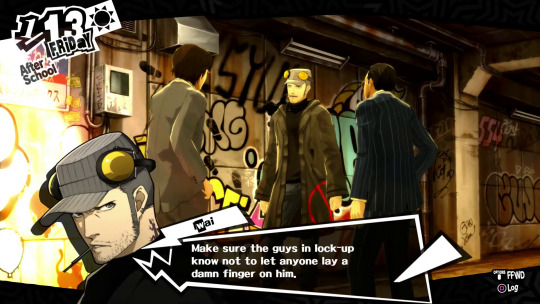
Why was this line cut from Royal? Was Joker somehow in less danger in juvie? Well... vanilla places a lot more emphasis on Joker's detention. Rather than Akechi showing up on 12/24, Sae has a long digression about juvenile hall, and how awful it will be, and the consequences for Joker and his friends. Joker gets interrogated in detention and so on.
So maybe this line was there to build suspense, in vanilla—whereas in Royal, there's just no need, because everything has already happened.
what about akechi
OKAY SO. Getting back to the important stuff, what does all of that tell us about Akechi's deleted scene? Well, it lets us date it.
This scene does not appear to exist in vanilla, when Akechi is pretty definitively ?dead in January and February. It was added with Sumire's, for Royal—and then deleted from the scheduler, so that it's out of game. And in Royal, two events play every day—except on 2/10.
Only Sumire's event plays on 2/10. So we can stake a pretty good guess here that Akechi's event would have been paired with Sumire's event, the other Royal Trio event, in that after school time slot on 2/10.
Maybe it would have played on 2/11 or 2/12. Maybe it would have been like Makoto's event, and jumped out of the list to play elsewhen. But given that it's a reveal, I think it almost certainly would have played last (as its position in the event list suggests)—and 2/10 with Sumire seems like a good place for it.
lastly, what even is this scene
I'm attaching my translation of the scene beneath the cut, since it's been sitting in my Tumblr drafts forever and a day. Obviously this is hugely subject to error and not likely to be entirely correct—nonetheless, enjoy.
* * *
[The Prurient Employee walks in and addresses the Gossipy Employee, who is staring down at the floor.]
Prurient Employee 聞いた? kiita? Did you hear the news?
Gossipy Employee ああ⋯ aa... I did.
[He turns to her, glancing outside at what appears to be nothing in particular.]
Gossipy Employee さっき、本人から聞いたよ。 sakki, honnin kara kiita yo I just got it from him face to face.
Gossipy Employee 来たばっかだってのに、来月で辞めるって話だろう? kita bakka datte no ni, raigetsu de yameru tte hanashi darou? People were saying he's leaving next month, right? Even though he only just got here.
Prurient Employee あの子まだ、ちっちゃかったときよね?お母さんと一緒に出てって何年ぶり⋯? ano ko mada, chicchakatta toki yo ne? okaasan to issho ni dete tte nannen buri...? That kid was tiny when he left with his mother, wasn’t he? How many years has it been?…
Prurient Employee イケメンになって帰ってきた~って、うちら盛り上がってたのに。 ikemen ni natte kaette kita~tte, uchira moriagatteta no ni We were so excited, he'd just come back all grown-up and handsome, and now...
Gossipy Employee ここのこと覚えといてくれてたのは嬉しかったよな。 koko no koto oboetoite kureteta no wa ureshikatta yo na At least he still remembered he could come here, though.
Gossipy Employee ⋯まあここは、俺らもそうだけど、スネに傷あるモンの駆け込み寺だ。 ... maa koko wa, orera mo sou da kedo, sune ni kizu aru mon no kakekomidera da That's what this place is for. To shelter people like us, who have a past they can't forget.
Gossipy Employee それに昔よしみってんなら、困ってたら匿うのは当然だよ。 sore ni mukashi yoshimi tte n nara, komattetara kakumau no wa touzen da yo Especially someone we’ve known for so long. As if we wouldn’t hide him when he needed it.
Prurient Employee 『東京でやり残したことがある』って理由らしいわよ。 "toukyou de yarinokoshita koto ga aru" tte riyuu rashii wa yo I heard he said he has "unfinished business in Tokyo."
Gossipy Employee そんなことまで知ってるの。 sonna koto made shitteru no You really do know it all, don't you.
Prurient Employee ⋯ねえ。 ...nee Tell me, though...
Prurient Employee やり残したことって、やっぱりコレ関係? yarinokoshita koto tte, yappari kore kankei? This "unfinished business" of his—that’s what all this is about, right?
[Akechi speaks, offscreen.]
Young Man's Voice やめてくださいよ。妙な詮索。 yamete kudasai yo. myouna sensaku I wish you’d keep your nose out of my affairs.
[The Prurient Employee goes !, realising he was there all along.]
Prurient Employee いるなら言ってよ⋯~ iru nara itte yo...~ Tell me, then, if you're right there!
Gossipy Employee 東京で世話になったヤツがいるんだと。 toukyou de sewa ni natta yatsu ga iru n da to He did say there was someone who helped him out in Tokyo.
Gossipy Employee そいつに貸しを作りに行くんだ。 soitsu ni kashi o tsukuri ni iku n da So he's going back because he owes him.
Gossipy Employee なあ? naa? Right?
Young Man's Voice 借り返して辞めるつもりですから。 karikaeshite yameru tsumori desu kara Don't worry, I’ll clear my debts here before I leave.
Young Man's Voice 去年の⋯イヴ? アポ無しで来た僕を何も言わず受けれてくれた分と⋯ kyonen no... ibu? aponashi de kita boku o nani mo iwazu ukerete kureta bun to... For taking me in last year… on Christmas Eve, was it? Without an appointment. Without asking questions.
Young Man's Voice それと昔、母がお世話になった分はね。 sore to mukashi, haha ga o-sewa ni natta bun wa ne And for everything you did for my mother.
Prurient Employee それにしても貸しを作りに⋯なんて、あんたらしいね。 sore ni shite mo kashi o tsukuri ni... nante, anta rashii ne Never mind that. To go to these lengths just because you owe somebody… No, I guess that’s you all over, isn’t it.
Young Man's Voice 思ったとおりにいけば、あいつとあいつと仲間⋯ omotta toori ni ikeba, aitsu to aitsu to nakama... If it comes off, then that guy and his friends will live out their lives…
Young Man's Voice 一生、僕に⋯感謝するんです。 issei, boku ni... kansha suru n desu …Well, they’ll owe me their thanks forever.
[The two employees go ?]
Young Man's Voice 軒先、掃除してきますね。 nokisaki, souji shite kimasu ne I’m going to sweep up outside.
* * *
revision history
Click here for the latest version.
v1.0 (2023/12/03)—first posted.
293 notes
·
View notes
Text
Studio Ghibli Sold to Nippon Television
The network will make Ghibli a subsidiary and hold 42 per cent voting rights, the companies said in a statement on Thursday.
Nippon Television promised to support the studio’s management and respect its autonomy, vowing to “forever protect the ‘craftsmanship’ and brand value of Studio Ghibli”.
Hayao Miyazaki, studio’s leading director and main visionary, is now 82 years old. Although his son, Goro, is also an animation film director, he “firmly declined” taking on the responsibility of running the studio, which led to the decision to entrust its future to Nippon Television, they said in the statement.
Ghibli gained greater international recognition when Spirited Away won the Oscar for best animated feature film in 2003, after it set a US$300 million (S$410 million) box-office record.
It was at a spa in 2022 that representatives from Ghibli and the network met to discuss the studio’s future and protect its ability to make films, they said.
Nippon Television was the first to air Miyazaki’s Nausicaa Of The Valley Of The Wind in 1985. The network also supported the debut of the Ghibli Museum in Mitaka, where guests are greeted by the fictional Totoro at the entrance.
258 notes
·
View notes
Text
[ENHYPEN] Behind the scenes of #ENHYPEN 's All Night Nippon X public recording 📻💖 #ENHYPENANNX
54 notes
·
View notes
Note
Regardless of your personal favorites, who would you say were some of the most impactful otokoyaku in takarazuka's history? for example, I'd say I'm a fairly new fan, but i hear a lot about miki maya, yuki amami, yoka wao even nowadays. Maybe as a long time fan, you can give us some insight on who you think were some of the most significant otokoyaky? Thank you
Sure! This is like, me judging on vibes/stories basically... others may feel differently!
The first generation of top otokoyaku: Anna Jun (Flower), Haruna Yuri (Moon), Migiwa Natsuko (Snow), and Ootori Ran (Star). These were the prime participants in the "Berubara Boom," skyrocketing Takarazuka's mainstream popularity, and leading to the establishment of an official top star system.
Ooura Mizuki, considered one of the best dancers in Takarazuka history, went on to become an internationally renowned tango dancer. It's impossible to attribute this definitively to one person, but I also think she started a steady incline in the difficulty of Takarazuka choreography over the years.
Amami Yuuki, who you mentioned, was famed for her natural acting style, unusual for the stage at the time. She became the youngest top star ever largely due to her popularity, and the fear that she would be offered better opportunities on and off stage outside of Takarazuka. She has also had a successful career in movies and dramas, and is probably the biggest household name amongst OGs.
In my admittedly biased opinion, I think Mori Keaki and Ichiro Maki set the standard for top stars and nihonmono
Maya Miki was noted for actively studying everyday men and somewhat revolutionizing otokoyaku style (think charmingly disheveled suit vs. the traditional buttoned up tailcoat look). She has also had a successful TV/movie career post-Takarazuka and is a household name in Japan.
Wao Youka is the longest running top otokoyaku, and had extremely notable chemistry with Hanafusa Mari (whose record of 8.5 years and 5 husbands will likely never be unseated)
Yuzuki Reon was 2 months shy of Wao's record, similarly had notable chemistry with Yumesaki Nene, and was wildly popular. She and Maya Miki are the only two otokoyaku to perform in Nippon Budokan, which is 7x the typical Takarazuka venue seating capacity.
I also have to mention Nanami Hiroki for a different reason. While those above were IMO very influential otokoyaku in Takarazuka, Nanami Hiroki's graduation marked a notable turning point in the opportunities available in the entertainment industry to OGs who didn't make top. Prior to her graduation, it was fairly rare even for a top musumeyaku to get regular leading roles post-Takarazuka, never mind actresses who were not top stars. Nowadays we see a lot more of this. Miya Rurika has gone on record in print saying the breadth and success of Kai's OG activities have hugely influenced her and paved the way to "be herself" in her career, and we've seen a large number of 2 and 3-ranked former otokoyaku follow similar steps since.
85 notes
·
View notes
Text
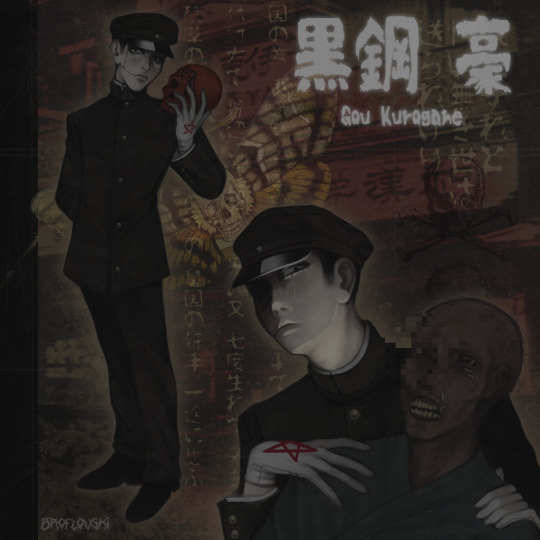
Ok I'm so obsessed with "Dai Nippon Gothic" and Suehiro Maruo's artwork and manga, I ended up getting a lot of inspiration from that to continue Akumu's mistery lore. I'm doing characters for the secret occult club investigating her death. They're called "Mugen no Kagi" (夢幻の鍵) or just "Fantastic Dream Key". I'll post the other members during the week bc I think each one deserves a post only about them, so here's the first one: Gou Kurogane
His backstory may contain some extreme/disturbing topics, be warned:
Gou is a 17 y.o teenager who is part of the secret occult club that investigates the entity Akumu. He is fascinated by death in every way. Coming from a traditional family and a lineage of samurais who served the Shogun, he follows a strict code of honor since he was a child. His family has a strange tradition of preserving the corpses of men who brought honor to the family in a sacred room in the house. His dream is to bring honor and die heroically in the war to have his body mummified alongside his ancestors, keeping the illusion that "war is honorable" due to his family tradition and the nationalist education given by the schools during the Showa period. He constantly has the job of serving food to the corpses and taking care of them as if they were alive.
Gou's father divorced his mother when Gou was very young and lost himself in alcoholism and prostitutes. Because of that he rarely sees his father and was raised most of the time by his older brother, who has a toxic and abusive relationship with him. Gou's brother is an imperial soldier, and constantly puts pressure on him, saying that "he will never bring honor to the family". Even though he gets excellent grades and being very good at swordsmanship, his brother invalidates his success, and nothing ever seems to be enough to please him. Although, Gou greatly admires his brother's position in the army, and dreams of becoming a soldier just like him and is deeply ashamed of his father and has vowed not to end up like him.
Despite all the problems and oddities, he is a very respectful and modest person in public, which makes people see him as someone exemplary in society and they don't even imagine his creepy side.
All this fascination with death made him start looking for more answers in black magic, and so he joined the secret occult club. Out of all entities and Yokai, he has the most interest in vengeful ghosts (like the Yurei type of ghost) and the Gashadokuro (giant skeletons made of the skulls of people who died in the battlefield). He is constantly desecrating warriors' graves and taking their skulls in the hopes of one day summoning a Gashadokuro. He doesn't usually work with curses and tends to focus more on summoning disturbed spirits and finding definitive ways to invoke each one of them, recording everything in his summoning notebook. He believes he can free Akumu's spirit and find out what happened to her.
*I don't condone the japanese imperial army and their actions nor the act of desecrating graves/disturbing the dead. The character is just inserted in this specific moment in history. Take his attitudes and traumas as a critique of how nationalism and extreme traditions affect people's minds in the worst way and how war is romanticized by some people.
#art#digital art#my art#digital drawing#drawing#oc#dark#aesthetic#wwii#historical#historical oc#dainippongothic#horror#japanese horror#corpse#Oc:Gou#also the asks are open again!#original character
169 notes
·
View notes
Photo
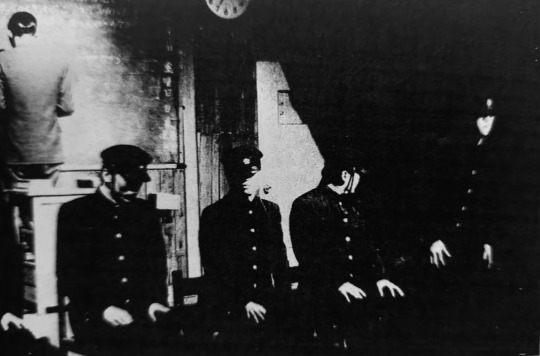

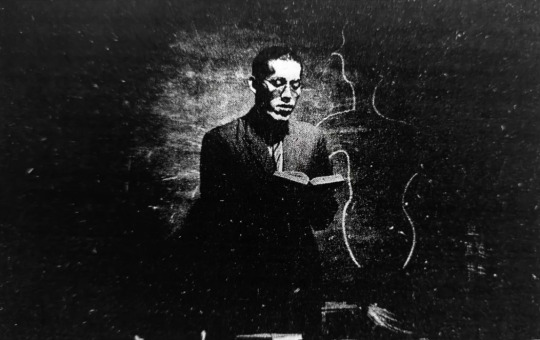

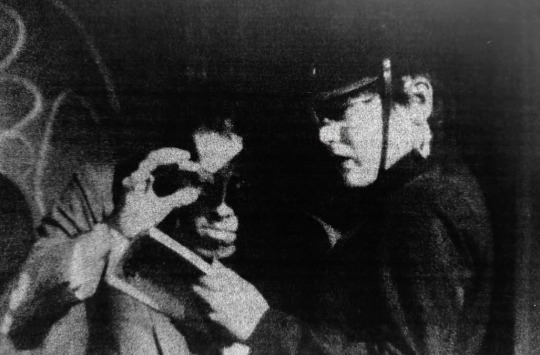





Photos from the elusive early-80s Tokyo Grand Guignol play Mercury, also known as Mercuro and Merbro. While the Tokyo Grand Guignol are more well known for their subsequent work in the original 1985 version of Lychee Light Club, Mercury was an ambitious debut effort that was as much Tetsuo: The Iron Man and Alien as it was Ranpo. In the two-act narrative, an unstable school teacher runs a health program where students volunteer to have their blood replaced with the outdated medicinal substance Merbromin. The Merbromin substance turns the students into sentient machines, with their organs being made “valuable” in how the doses of mercury turns their innards metallic. In the midst of all this, a mysterious transfer student infiltrates the school grounds to uncover the whereabouts of his missing sister. Plots ultimately intertwine, resulting in a nightmarish Oedipal bloodbath in a macabre science lab that’s riddled with many taboo secrets. The play contains several infamous special effects standouts. One of the centerpieces was an extended sequence at the beginning of the second act where the schoolmaster (performed by the now mainstream actor Kyusaku Shimada, originally working under the pseudonym Lovecraft Shimada) carries out a live vivisection on a student to surgically extract his pubescent urges, which had manifested as a chestburster. The screenplay is decorated with intricate surrealist details with characters speaking direct quotations from dadaist poets of the early Showa period, resulting in an experience that is as much nocturnal poetry as it is taboo horror. The play only had one run in 1984, with a heavily truncated TV performance being done a year later on the “Youth Performance Special” morning Nippon TV program where the set pieces from the openings of the first act and second act are strung side-by-side. While a full video recording is known to exist of the play on both DVD and VHS, the recording has never surfaced. It’s a damn shame.
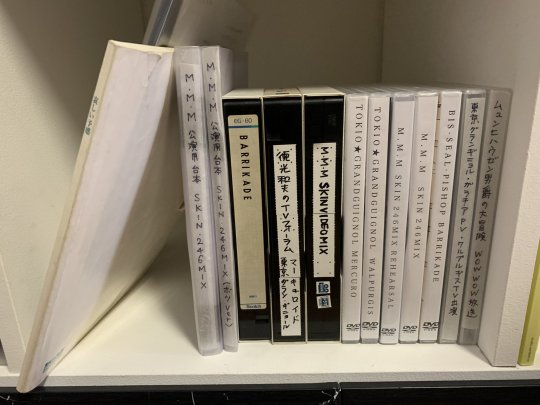
The only available bits of media in relation to the play to this day are the screenplay, a handful of grayscale photos and some parts of the soundtrack. The known songs that were featured in Mercury include: 1. Four Enclosed Walls - Public Image LTD 2. Sons Of Pioneers - Japan 3. The title theme of the 1956 film “Des gens sans importance” 4. Brilliant Trees - David Sylvian Bits of media relating to Mercury’s short 1984 run are steadily being resurfaced every day. Two of the images in this post were digitized by yours truly. The source was the 28th volume of Yaso magazine, a volume that concerned underground theater which included and interview with Norimizu Ameya, the lead director of the Tokyo Grand Guignol.
510 notes
·
View notes
Text

On August 15th and 16th, in 1972, DEEP PURPLE recorded what would become one of the most influential live albums in the history of Hard Rock and Heavy Metal, "Made in Japan"!
The recordings took place at the Festival Hall in Osaka, Japan (Aug.15th & 16th) and also a third night August 17th, at the Nippon Budokan in Tokyo, Japan. Happy 50th year historic recording/concert event anniversary! #DeepPurple #MadeinJapan
#metalcultbrigade#artists on tumblr#art#rock#hard rock#classic rock#deep purple#70's music#70s rock#70's#made in japan
11 notes
·
View notes
Text

300 mostly female fans attend a farewell memorial for the character Marg from the robot anime TV series "Six God Combination Godmars" at Nippon Television's South Building Hall, 25 March 1982. The event was held in cooperation with the PR department of Nippon Television, Tokyo Movie Shinsha, King Records and Animedia magazine amongst others.
12 notes
·
View notes
Text
Some games I hope get a localization announcement in 2024
Due to the new 30 image limit, I had to change the list a bit.
From previous years:
Ciel Nosurge DX /Ar Nosurge DX(Please, Koei Tecmo/Gust)

Asatsugutori
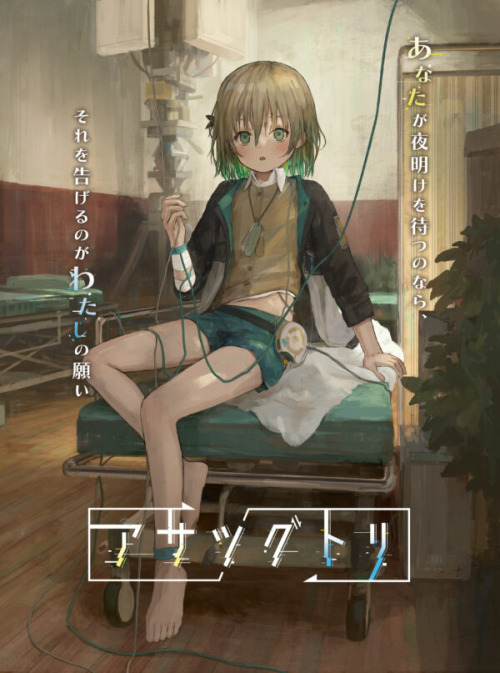
Kochira, Haha Naru Hoshi Yori

Murder Detective: Jack The Ripper

Buddy Mission: BOND
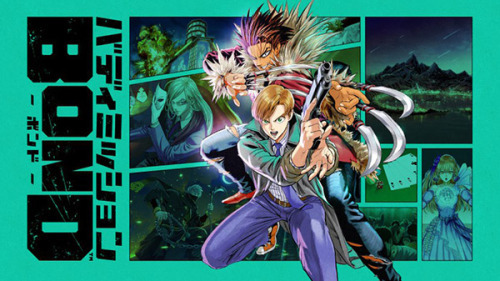
AIR for Switch

Knights in the Nightmare Remaster

Medabots Classics Plus(it seems there was a weird legal issue about a scam company using the Medarot name for NFT crap that was settled in the actual owner's favor recently)

Yoru, Tomosu

Memories Off Historia Vol. 1 and Memories Off Historia Vol. 2

Death Match Love Comedy!(set in the same world as Raging Loop)
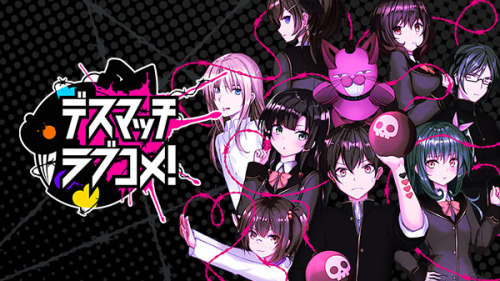
Yokai Watch 4/4++(Level 5 seems to be hopefully getting a second wind, so maybe this will come over, too)

Dragon Quest X Offline
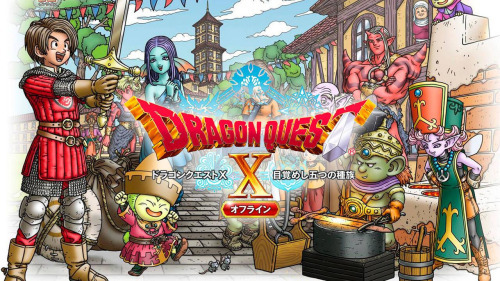
Blue Reflection Sun(I'm mostly interested in this just for the story details from before Blue Reflection: Second Light. I think someone on the Blue Reflection wiki might be translating/summarizing the story, though.)

Kanon for Switch

Mizen Tantei: The Protea Cases
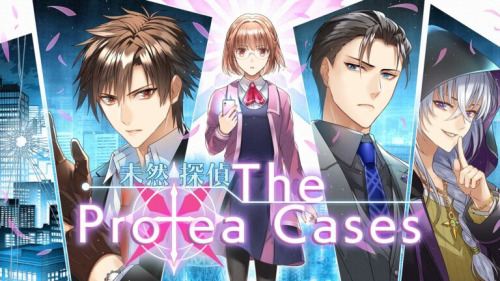
Gensou Shoujo Wars
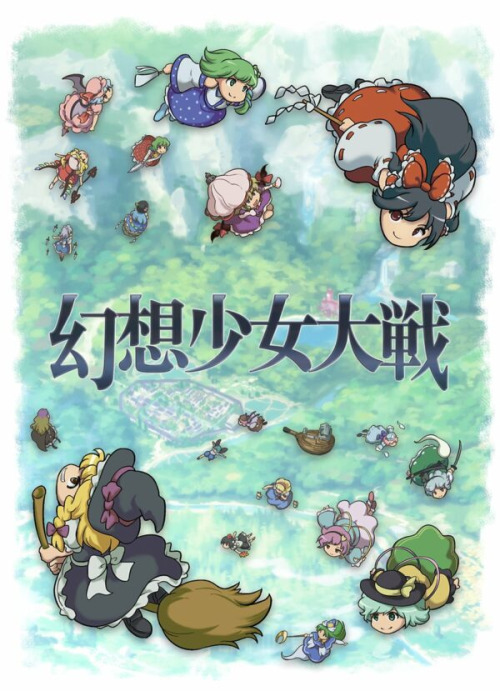
Gizoku Tantei Nosuri

Kanda Alice mo Suiri Suru.

New additions.
Fitness Boxing feat. Hatsune Miku: Isshoni Exercise

Riviera: The Promised Land Remaster
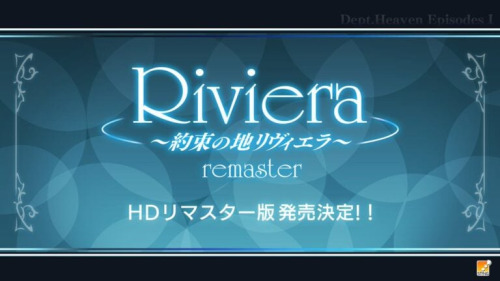
Xicatrice
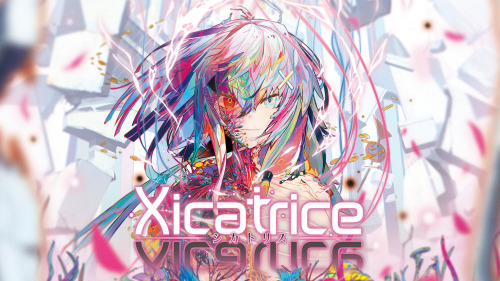
Murder Mystery Paradox: Fifteen Years of Summer
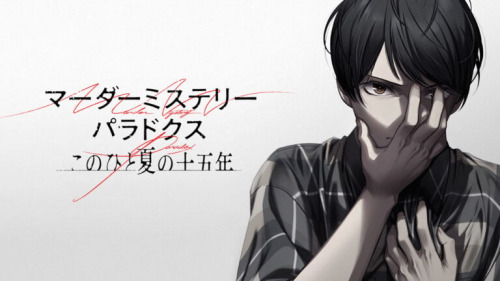
Yggdra Union 3-in-1 Special Edition

Natsu-Mon: 20th Century Summer Vacation

Hayarigami 1-2-3 Pack

Bar Stella Abyss

The witch of the Ihanashi
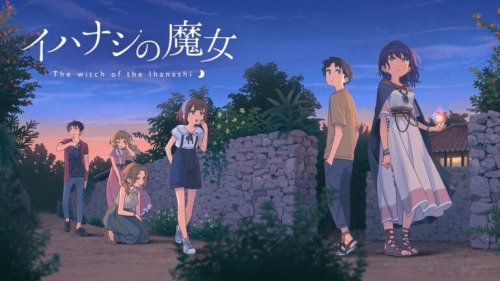
everlasting flowers

Suspects Room: Keishichou Monzen Sho Torishirabe Han
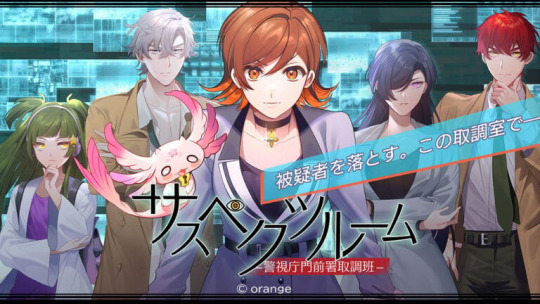
Bonus:
SINce Memories: Off the Starry Sky
Magatsu Barai
Amnesia World for Nintendo Switch
Heaven Burns Red
To All of Mankind(with fixed bug and DLC issues)
Exile Election
Revue Starlight visual novel
Hoping for more information on Fate/Extra Record; there hasn't been any in a while(that I'm aware of).
I put some of Nippon Ichi's VNs from a few years ago on here in the off chance that, after bringing Process of Elimination over, they'd be willing to bring more over, too.
It's nice to see a bunch that were on last year's list actually got brought over or are in the process of coming over.
...seriously, KT, please bring Ciel Nosurge DX/Ar Nosurge DX over.
#long post#Localization wish list#Ciel Nosurge#Ar Nosurge#Asatsugutori#Kochira Haha Naru Hoshi Yori#Murder Detective: Jack The Ripper#Buddy Mission: BOND#AIR Visual novel#Knights in the Nightmare#Medabots#Medarot#Yoru Tomosu#Memories Off#Death Match Love Comedy#Yokai Watch#Dragon Quest X#Blue Reflection Sun#Kanon#Mizen Tantei#Gensou Shoujo Wars#Gizoku Tantei Nosuri#Kanda Alice mo Suiri Suru#Fitness Boxing feat. Hatsune Miku: Isshoni Exercise#Riviera: The Promised Land#Xicatrice#Murder Mystery Paradox: Fifteen Years of Summer#Bar Stella Abyss#Yggdra Union#Natsu-mon
37 notes
·
View notes
Text

German Eurofighters Make Record-Breaking Flight With Help From Private Aerial Refueling Company
Three of the German fighters were airborne for more than 10 hours during a flight between Japan and Hawaii with the help of Metrea aerial refueling company.
Posted on Jul 27, 2024 1:34 PM EDT
Three German Eurofighter EF2000s have completed a record-breaking endurance flight for the multirole fighter. Remaining in the air for a total of 10 hours 31 minutes, the trio of combat aircraft flew from Japan to Hawaii today, supported by aerial refueling tankers that included KC-135 Stratotankers operated by private aerospace firm Metrea, a contractor-owned and operated aerial refueling business that recently acquired of 14 KC-135s from the French Air and Space Force.
Luftwaffe
Three German Eurofighter EF2000s have completed a record-breaking endurance flight for the multirole fighter. Remaining in the air for a total of 10 hours 31 minutes, the trio of combat aircraft flew from Japan to Hawaii today, supported by aerial refueling tankers that included KC-135 Stratotankers operated by private aerospace firm Metrea, a contractor-owned and operated aerial refueling business that recently acquired 14 additional KC-135s from the French Air and Space Force.
The long-distance flight, part of the Pacific Skies exercise, which you can read more about here, began with the three Eurofighters taking off from Chitose Air Base in Hokkaido, Japan — where they had been taking part in the Nippon Skies 24 drill — at 9:02 a.m. local time.

Multiple refuelings were required to get the aircraft to Hawaii, including tankers flying from Guam, according to the official account from the Luftwaffe.
While eight refuelings were planned, the fourth scheduled refueling wasn’t required, with sufficient fuel already having been delivered by the first tanker. The sixth refueling rendezvous was also not required, due to a good tailwind.
“Never before has a Eurofighter been in the air for longer than this,” the Luftwaffe live-blogged, as the mission came to its conclusion. “After 10 hours and 31 minutes, the fighter jet touched down at Hickam Air Force Base in Pearl Harbor at 12:33 a.m. local time. Naturally, we toasted this with a Guinness.”

The three Luftwaffe Eurofighter pilots at Hickam after completing their long-duration flight. Luftwaffe
Now they are in Hawaii, the three German Eurofighters will take part in this year’s Rim of the Pacific (RIMPAC) international maritime warfare exercise alongside ships from the German Navy, and ships and aircraft from other nations.
Reportedly, the previous longest-duration Eurofighter mission involved an eight-hour and 36-minute flight by U.K. Royal Air Force Typhoons, when they were engaged in operations against Islamic State in the Middle East, on September 23, 2017.
It’s unclear how many tankers were involved in supporting the latest Luftwaffe mission, although at least one was provided by Metrea. We have also reached out to the company for more information. A video published by the Luftwaffe shows the Eurofighter flown by the detachment leader taking on fuel from one of Metrea’s KC-135s, using the probe-and-drogue method.
Metrea’s Jon “Ty” Thomas, head of the company’s Air and Space Group, did provide The War Zone with the following congratulatory statement about its Luftwaffe clients:
“We are proud to support our partners in the German Air Force as they executed this complex movement from Japan to Hawaii. 10.5 hours is a new record for the Eurofighter. Long flights over the Pacific are never simple, with few divert options and challenging weather. Ausgezeichnet, Luftwaffe! The German Air Force did an excellent job. I’m equally proud of our team at Metrea, who prepared and executed this mission with excellence. We look forward to more support for the German Air Force as part of Pacific Skies 2024.”
While the duration of the mission itself is an impressive achievement, it’s just as notable that it was enabled, at least in part, by contractor-owned and operated aerial refueling assets.
The mission comes in the same month that Metrea announced it was to dramatically expand its business with the purchase of 14 KC-135 tankers from the French Air and Space Force.
Transfer of ownership of the KC-135FR tankers to Metrea took place on June 26, according to a company press release, and the company said it planned to have the first of these aircraft flying under its banner “within weeks.”
Private aerospace firm Metrea has bought France's entire fleet of KC-135 tanker in a major new bet on contractor aerial refueling services.

One of Metrea’s ex-Republic of Singapore Air Force KC-135R tankers. Metrea
Metrea
Metrea currently operates four KC-135Rs it previously acquired from the Republic of Singapore Air Force.
With the French tankers now added, Metrea’s tanker fleet is by some margin the largest in private hands — in fact, it owns more aerial refueling aircraft than all but four air forces worldwide.
Providing refueling support to German Eurofighters underlines the thinking behind Metrea’s business model.
Earlier this month, “Ty” Thomas told The War Zone that the KC-135 had been “very deliberately chosen… as our platform of choice.”
Thomas continued: “From the perspective of a receiver, whether it’s a U.S. military receiver, or a NATO or an… otherwise allied receiver aircraft, if they find themselves in a position where they need help from the United States… and it includes help in terms of air refueling, what is the most likely tanker that’s going to pull out there in front of their receiver? It’s gonna be a KC-135. Why? Because the vast majority of tankers in the USAF inventory still remain KC-135s. And will even for probably the next 10 years or so.”

A KC-135 from private aerospace firm Metrea refueling Warthogs during an exercise in October 2023 marked the first time a contractor-operated tanker had ever linked up with U.S. Air Force tactical jets. Metrea
For Metrea, supporting the Luftwaffe’s long-distance flight is just the latest in a series of milestones.
These include the first use of a contractor-owned and operated tanker to refuel an aircraft via boom, the first commercial aerial refueling of any U.S. Air Force aircraft, and the first-ever use of a private tanker to refuel Air Force tactical combat jets (A-10 Warthogs) in April, June, and October 2023, respectively.
Nevertheless, as is so often the case with supporting tanker assets, it will be the German Eurofighters and their pilots and maintainers that win the plaudits for today’s record-breaking flight.
Of course, that is hardly undeserved, especially as the mission puts a spotlight on the German Armed Forces’ increasing focus on the Asia-Pacific theater, a reality that’s now reflected across several of Europe’s NATO nations.
Once again though, today’s long-distance flight reinforces the old adage, “nobody kicks ass without tanker gas,” and it’s increasingly the case that those tankers are being provided by private contractors as well as air forces.
Contact the author: [email protected]
12 notes
·
View notes
Text
I remember I first had this thought when I watched No Limit MV (especially during the first chorus)
youtube
But I personally think the best example would be from live performances and my fav is from their Asia Artist Award 2022. The mix of their eye catching outfit + choreo choice + camera work that overviews all members dancing at the same time is chefs kiss 😘👌
youtube
There's always so many things to look at during RMPG performance especially if you have multiple oshis + the in-between interactions between members, so it always feel overwhelmingly exciting!
An additional point for me is how RIKU always joins in with the performers and is always dancing together so it feels like there's an additional member entering in the middle 😆
TJBB: *has 12 members*
me: huh but they dont look like they have more than 10 people
RMPG: *has 16 members*
me: are you sure??? it looks like theres a whole 30 people up that stage
#yukenshairtie#i also loved their performance during nippon haku bangkok#but there isn't an official recording from bangkok so they cant compare with AAA recording#official videos from their concerts arent as good tbh bc they change cameras so often and barely show the whole group#the rampage#Youtube
22 notes
·
View notes